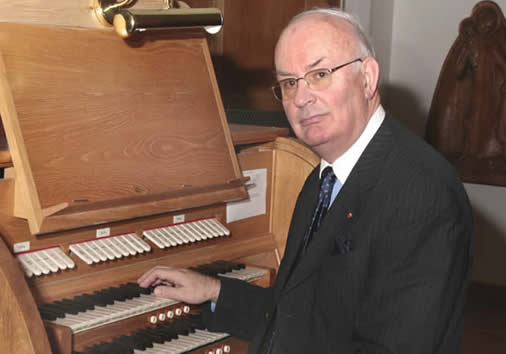Coals to Newcastle…..
Over the last couple of years I have done a number of documentaries for RTÉ’s The Lyric Feature as an independent documentary maker. The first thing that happens is that you submit a proposal for a program, and when that stage is passed you are asked about the equipment you intend to use in the field. When I mentioned the fact I was using DPA Microphones, they instantly relaxed and sent me on my way.
The subjects I have covered in my programs are mainly about the world of classical music. In one program I chronicled the life and work of a Belgian organist who had come to Ireland in 1923 and who had died in 1974. In another, I followed Gerry Murphy – composer, raconteur around the old Austro-Hungarian Empire in search of the hidden worlds of Liszt, Bartok and Kodaly; the latter project had us roaming the byways of Transylvania with a plastic bat taped to the windscreen. Apart from the usual interviews and commentaries, the project involved taping actuality and even recitals on the fly. One minute you could be on a bus screaming down the road at 120kph – the next minute you could be taping a concert in a recital hall.
Many documentary-makers operate in the field with a hand recorder with built-in microphones. In audio terms the results are adequate for speech programs but not for programs aimed at music lovers – they are the most critical listeners on the planet. Using top-end gear for a documentary had an interesting result –the difference was noticed; a number of listeners listed sound quality as one of the things they liked in the programs that I made.

Gerard Gillen
This year the bar was raised when I was commissioned to do a documentary to celebrate organist Gerard Gillen’s 70th birthday. Organists and their followers live in a world where subsonic activity is noticed and prized. Part of the brief involved recording interviews and music in Denmark, home of DPA Microphones – definitely, a case of coals to Newcastle. I had to be very mobile and the gear had to be top-notch. I had got permission to record a service in Copenhagen’s Lutheran Cathedral, which has a magnificent Marcussen Organ. I also had to record a number of interviews in less than favorable acoustics and in a very short time frame. There was only one choice – a pair of trusty DPA 4006s and a Sound Devices hard disk recorder. I took DPA at their word when they described the 4006s as a good general purpose microphone. Some people might look askance at the idea of using them for interviews – but their beautiful stable sound didn’t present any audio nasties. When working with inferior microphones, the ear tires quickly of the obvious deficiencies in response curve. From an operational point of the view the DPA microphones behave more like a scientific instrument than anything else – they are consistent, unobtrusive and give great stereo images.
As a freelance classical producer I have been using the DPA 4006s for over 12 years now on various classical recordings. There are no folk more fussy than choral singers and organists. At the first hint of a wrong note or an unwanted sound, they pounce. One of the most challenging tests of recording is close harmony with female voices in a high register; the sound can be very nasty if the microphones are not up to it. Having sat through hundreds of hours of late night editing with lynx-eared choral conductors, I can tell you there is only one choice. Some of my clients have asked for DPAs by name, such is their reputation.
One of Denmark’s leading organ builders and voices, Ole Hoyer of the Danish Organ builders Frobenius once told me that they have to build and regulate instruments that generate low frequencies right down to 20Hz and up to 20KHz. Although the ear can’t hear the extreme frequencies you need to know that the microphones you use to record are properly built and calibrated to perform well across the complete range, and deal with the resulting complex waves at high amplitudes.
One of the things I have discovered is that some listeners to some of the organ CDs I have produced over the years test their HiFi’s with organ music recordings played at very high levels through top-end equipment. I have been informed on a number of occasions that my recordings have indeed survived the test where other commercial offerings showed up distortions.
Twelve years ago, when I bought my first DPA I was told “you only buy these microphones once!” My history books tell me that when Vikings died they were buried with their armour, their arms and their prize possessions; sometimes I wonder if a similar fate awaits my DPAs………
Brian McIvor
Freelance Classical Music Producer and Documentary Maker, Ireland
Tags: DPA


 Follow
Follow



